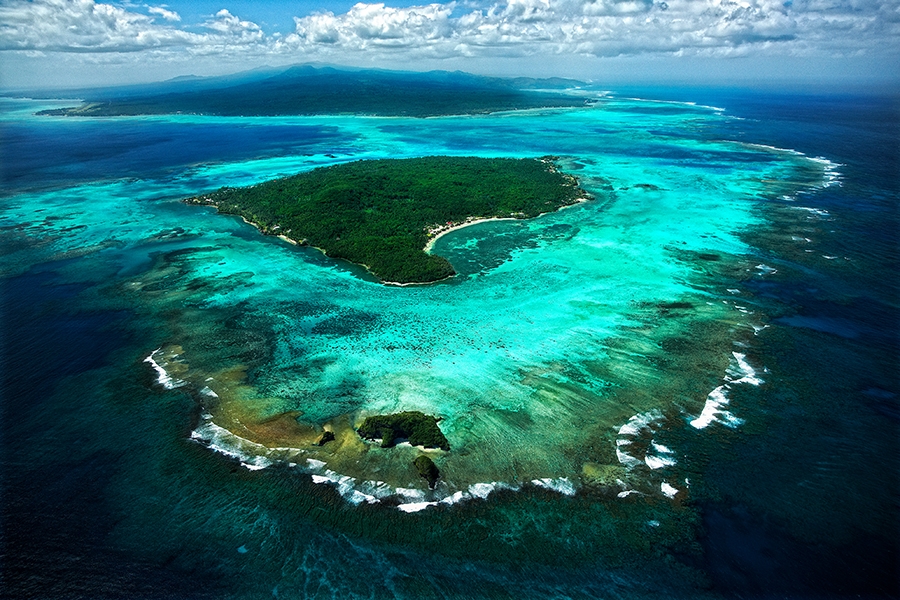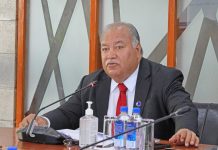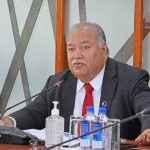By Shalveen Chand
The south coast of Upolu in Samoa is truly a magnificent place. Its white sandy beaches are lined with beach fales and magnificent views of the smaller outer islands.
Lalomanu Beach is one the most popular tourist attractions that Samoa has to offer. The sea and sand have served the people of the area well and in return the people have kept the beaches clean and void of pollution.
It was once voted by Lonely Planet as one of the top 10 Beach Destinations of the World.
However, in recent years the sea has not been kind to the people of Lalomanu. Tides are becoming higher and for the last three to four years there has been inundation of the sea affecting gardens, homes, and infrastructure.
This is the same area which was devastated by the monster tsunami in 2009.
Now a seawall is being constructed along the road to stop the sea from encroaching any further.
The sea walls run along a broken piece of land that looks out to Namu’a Island, a favorite destination for tourists and locals alike.
A resident of the area, Fani, said the maritime weather conditions were bad in 2022 and they continue to be threatened by king tides.
“The king tides kept bringing the sea inland, so the waves resulted in damaged grass and as well as gardens,” said the local resident.
“You could see the root of the tree that was there, so it was losing its grip and feeding on salt water.
“It’s nearly hard to believe that the change of tides these days are causing more damage than usual.
“It is thus nice to see that the south coast is now blessed with the sea wall.”

Another resident Sikivi Semo said he did not think the roads would be affected by the sea but was surprised to see that the shoreline was moving further inland.
“We rarely notice till one day we drive by and there is a big hole in the middle of the road,” he said.
“The sea seems a lot rougher than it was in the last five years. It also seems as if the weather is a lot hotter.
“The rocks for the new sea wall seem to help, which is a good thing because that part of the coast is vulnerable to high tides.”
The coastal area where the seawall is being worked on runs from Saleaamua to Mutiatele, Ulutogia, Vailoa and Lalomanu.
Another resident, Sosefina Leota, is concerned about the safety of children who play along the shoreline and road.
“I see the children playing on the road sometimes when there are not many vehicles in the evening,” she said.
“It is good to see that the wall covering will help them stay away from the dangerous holes that the sea was digging by the roads.”
The ocean is, in fact, attacking Samoa’s coastline slowly, but surely. Being surrounded by walls could also be taken to represent being trapped. This may be a good way to describe Samoa’s plight in the face of the global climate change crisis. But even though a small place like Samoa, which is only responsible for a tiny fraction of global greenhouse gas emissions, may have little power to mitigate climate change, the people of Samoa do have the power to adapt to it.
The seawall in Apia runs for more than four kilometers and it was funded by overseas aid, in the case of Apia, by Japan. All seawall construction and climate resilience projects in Samoa rely heavily on aid and foreign funding.
There is very little funding from its own budget. Most villages in Samoa are along the coast and many of these villages are seeing changes as tides have become higher and, in some places, encroaching inland.

Building resilient infrastructure
Samoa’s Minister for Natural Resources and Environment, Toeolesulusulu Cedric Pose Schuster highlighted that the government had undertaken several projects with donor partners to ensure the construction of resilient infrastructure which would stand the test of climate change.
“Samoa is a least-developed country and small island developing state that is highly vulnerable to extreme events including tropical cyclones, drought, and flooding. The programs aim to strengthen the ability of Samoan communities and public services to make informed decisions and manage likely climate change-driven pressures in a proactive, integrated, and strategic manner,” he said.
“The bulk of the program will focus on making improvements to infrastructure in ways that will help Samoan communities adapt to climate change.”
Currently there is work financed by donor partners where 25 districts’ coastal infrastructure management plans will be reviewed, which are community-based plans focusing upon response planning for individual villages considering their geographical circumstances and the community‘s perceptions of their needs.
The plans will be updated to integrate climate change-induced disaster risk management principles, adopting a Watershed and Ridge to Reef Management approach. In addition, village hazard zone relocation plans, taking climate risks into account, will be formulated in at least 15 villages in selected districts. Any new construction will be a result of these consultations on coastal infrastructure and village relocation.

Bringing back the horror of 2009
On 5 December 2022, Apia was rocked by an earthquake measuring 6.7 on the Richter Scale.
A tsunami watch was activated by the Samoan Government, but the seismic activity was too small to generate a tsunami. However, after the earthquake, people closed shops, schools sent children home and those living on the south and east coast started making their way to higher ground.
Lumepa Hald is a survivor from 2009 when the tsunami hit Lalomanu. Her daughter was taken by the ocean and every time there is such a warning issued, she can recall the day when a wall of water came at them.
“Such is life, and we need to move on. I am grateful that since 2009, there have been a lot of changes in terms of warnings being readily available,” she said.
“This allows us time to evacuate and save our lives. It was hard the first few years, but we have learned to live with the fact that we are in a place where extreme weather conditions and natural disasters are happening.”
Through donor funded aid and programs the tsunami warning system and relaying of information has vastly improved.
In 2019, New Zealand’s climate and ocean science agency (NIWA) started deploying a new tsunami warning system around the Pacific.
Hi-tech buoys have been placed at strategic locations which offer tsunami monitoring and detection information for nations including the Cook Islands, Fiji, Niue, Samoa, Tokelau, Tonga, and Vanuatu as well as New Zealand.
NIWA said it would be the most advanced tsunami monitoring network in the world.
The buoys are anchored to the bottom of the sea.
When an earthquake happens where a tsunami is triggered off, it will give an early warning to all Pacific nations.
This was missing in 2009 but even more than the warning system itself, the method of relaying information has improved with advancement in technology.
SOURCE: PASIFIKA ENVIRONEWS/PACNEWS














